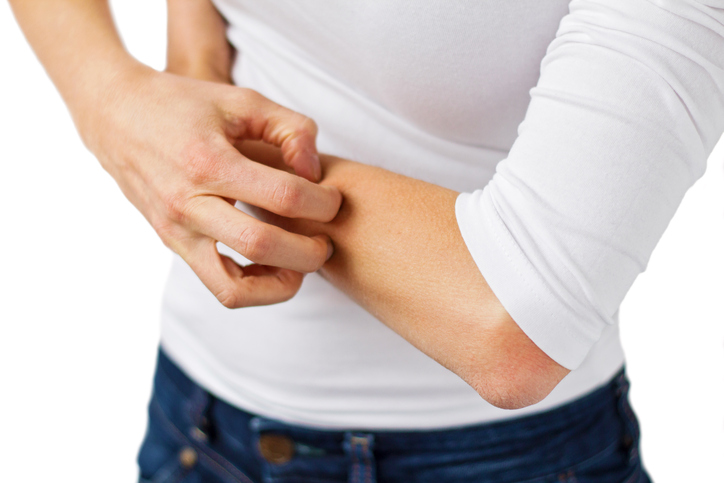
Your skin is your body’s largest organ, protecting you from bacteria and viruses, while at the same time regulating body temperature. Amazingly, it weighs on average between six and nine pounds with a surface area of two square yards. Many skin conditions and diseases can arise over this large organ; some irritate and inflame the skin resulting in burning and itching in the form of allergens like hives while others can affect your appearance, such as acne or scarring. Still others can pose a deadly consequence to threaten your life, such as skin cancers.
Let’s go over some common skin diseases and causes.
Melanoma: This is perhaps the most well-known offender – and most feared – when it comes to the skin. This type of skin cancer is the most deadly, brought on by excessive, unprotected exposure to the sun. Melanoma can be treated with surgery, chemotherapy, or radiation.
Psoriasis: Causing scaling and swelling, psoriasis results in patches of thick, red, scaly skin that can be extremely itchy and sore. Prominent on the elbows, knees, scalp, lower face, and palms, psoriasis is only officially diagnosed when a skin sample is looked at under a microscope. It’s caused by an immune system imbalance pertaining to T cells in your body.
Impetigo: This is a skin infection triggered by staphylococcal or streptococcus bacteria, common in small children between the ages of two and six. Red, small, bumpy sores can pop up on the face, arms, and legs, fill up with pus, open and scab over. It’s treatable with antibiotics.
Rosacea: Characterized by flushing in the face and inflamed eyelids and nose, rosacea has no cure, but can be treated with antibiotics. Not much is known about the causes of rosacea, but many point to environmental or hereditary factors.
Eczema: This long-term skin disease is characterized by dry, itchy skin and rashes. Genetic and environmental causes are to blame for this condition, which is treated with oral antihistamines and topical corticosteroids.
Moles: Basically, these are growths on the skin that occur when melanocytes grow within a small area. The average person has between 10 and 40 moles, with new ones cropping up with age. Atypical moles can grow into melanoma, which is why you should seek the advice of a dermatologist if you notice any changes in your moles.
Shingles: If you have had chickenpox as a child, you are at risk for getting shingles as an adult. This painful rash can cause blisters in people over 50, which is why there is a vaccine for people over that age that can help prevent this condition. The treatment is anti-viral medicine that can shorten the duration and severity of shingles but doesn’t cure it.
Scars are another common skin condition that can get be treated with topical gels such as Scarfade. When the skin is torn or cut, the body responds by sending Collagen to the wound site to help repair it. Often, the body sends an overabundance of Collagen to the site, resulting in a buildup that shows itself in the form of a thick lumpy scar. Topical treatments like Scarfade help minimize the formation of scars by regulating Collagen production. Interestingly, it can also be effective on scars that have already formed by helping to realign excess Collagen buildup, causing it to lay down more neatly and flattening it out.
